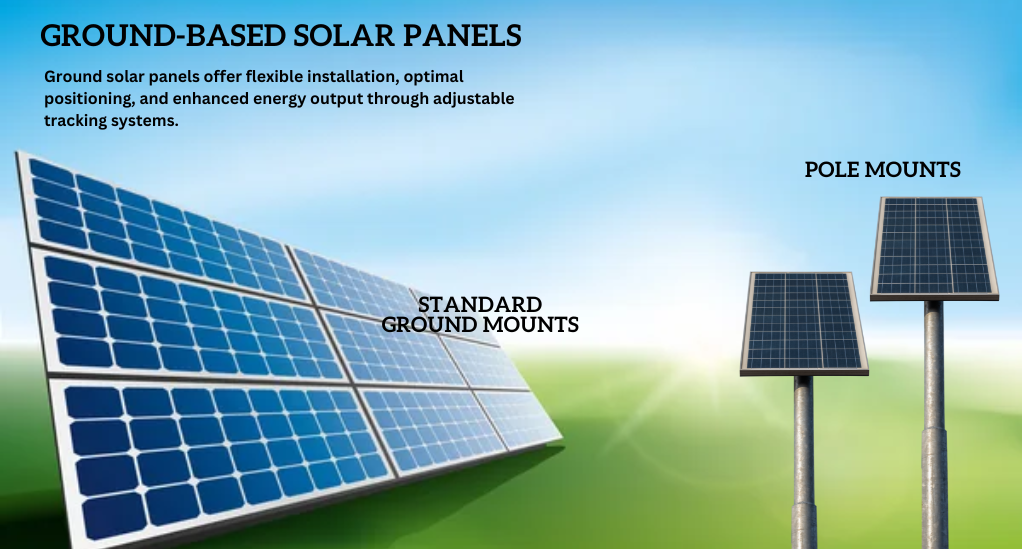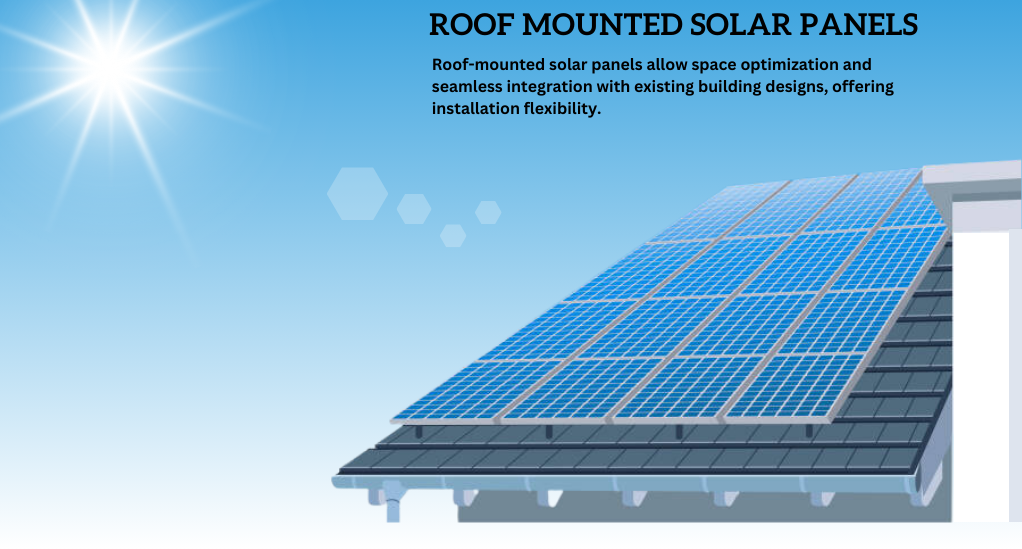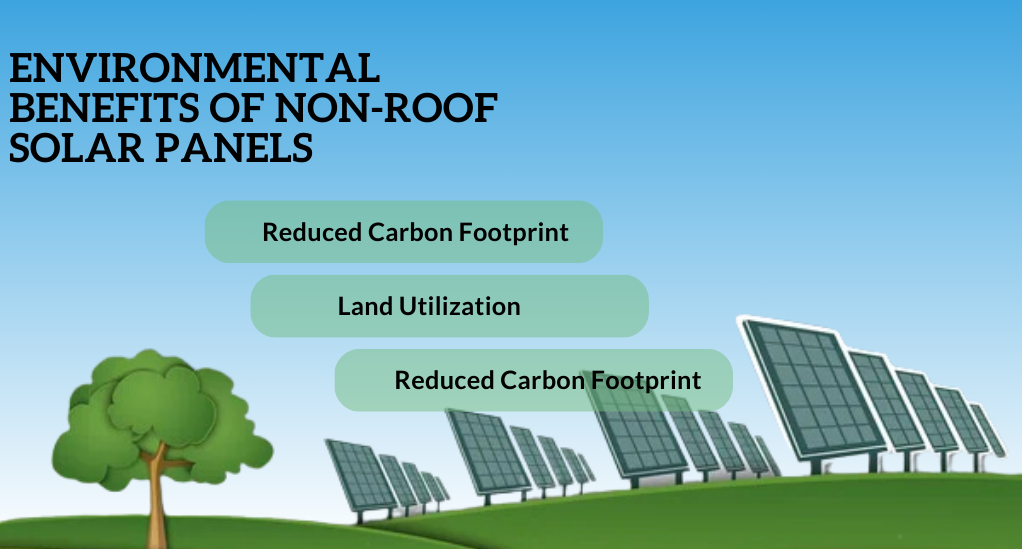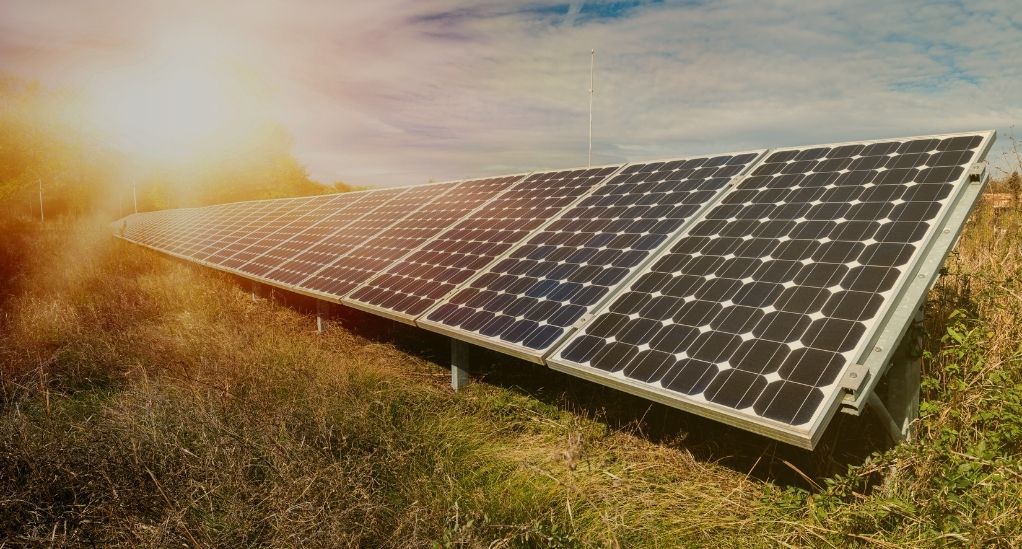In recent years, the shift towards renewable energy sources has been nothing short of revolutionary. As homeowners and businesses alike strive to reduce their carbon footprint, the adoption of solar energy solutions has skyrocketed. At the forefront of this transition are two prominent options: ground-based solar panels and roof-mounted solar installations. In this comprehensive guide, we delve deep into the nuances of both, helping you make an informed decision for your home or business. Let’s embark on this enlightening journey, shedding light on the world of non-roof solar panels and their rooftop counterparts.
The Rise in Solar Energy Solutions
In the wake of escalating climate concerns, the transition to renewable energy sources has become more than just a trend—it’s a necessity. Solar energy, being at the helm of this transition, offers a plethora of options for those looking to make a sustainable switch. Ground and roof-mounted solar panels stand as two viable options, each with its unique set of characteristics and benefits.
Ground Based Solar Panels: A Glimpse
Ground-based solar panels, as the name suggests, are installed directly onto the ground, rather than being mounted on a rooftop. These installations are becoming increasingly popular due to their versatility and the ability to install them in optimal locations for sun exposure, thus potentially offering higher energy output.
Roof Mounted Solar Panels: The Traditional Route
On the other hand, roof-mounted solar panels have been the traditional choice for many homeowners. These panels are installed on the roof of a building, utilizing space that might otherwise go unused. While they might not offer the same level of flexibility as ground solar installations, they are a great option for those with limited yard space.
Ground vs. Roof Mounted Solar Panels
| Aspect | Ground Mounted Solar Panels | Roof Mounted Solar Panels |
|---|---|---|
| Installation Flexibility | High (can be installed in optimal locations for sun exposure) | Limited (dependent on roof structure and orientation) |
| Energy Output | Potentially higher (especially with tracking systems) | Generally lower (fixed orientation and tilt) |
| Initial Installation Cost | Higher (due to the need for additional structures) | Lower (utilizes existing structure) |
| Maintenance | Easier (accessible for cleaning and repairs) | More challenging (accessibility can be limited) |
| Aesthetic Impact | Variable (can be installed away from main structure) | Fixed (visible on the building structure) |
Understanding Ground-Based Solar Panels
In the realm of solar energy, ground-based solar panels are emerging as a formidable contender. These panels, which are installed directly onto the ground, offer a host of benefits that make them an attractive option for many homeowners and businesses. Let’s delve deeper into the world of ground solar solutions.

Definition and Characteristics
Ground solar panels are essentially solar panels that are mounted on structures that are anchored to the ground, as opposed to being installed on rooftops. These structures can vary significantly in terms of height and design, ranging from just a few inches above the ground to several feet tall. The flexibility in installation allows for optimal positioning, which can significantly enhance energy output.
- Flexibility in Installation
One of the standout features of ground-mounted solar installations is the flexibility they offer in terms of installation. Unlike roof-mounted panels, which are limited by the structure and orientation of the roof, ground panels can be installed in a location that guarantees maximum sun exposure, thereby increasing their efficiency.
- Enhanced Efficiency with Tracking Systems
Ground solar panels can be equipped with solar tracking systems, which are mechanisms that adjust the orientation of the panels throughout the day to follow the sun’s path. This ensures that the panels receive maximum sunlight, thereby increasing their energy output. These tracking systems can be single-axis (moving in one direction) or dual-axis (moving in two directions), with the latter offering even greater efficiency.
Types of Ground Solar Structures
When it comes to ground solar installations, there are primarily two types of structures that are used: standard ground mounts and pole mounts.
- Standard Ground Mounts
Standard ground mounts involve anchoring the solar panels to the ground using a framework of metal structures. These mounts are generally fixed and do not allow for adjustments in orientation and tilt. However, they offer stability and are relatively easier to install.
- Pole Mounts
Pole mounts, on the other hand, involve mounting the solar panels onto poles that are anchored to the ground. These mounts allow for greater flexibility in terms of adjustments and can be equipped with tracking systems for enhanced efficiency.
Benefits of Ground Mounted Solar Installation
Ground mounted solar installations offer several benefits that make them a preferred choice for many. Here, we explore some of the key advantages:
- Optimal Positioning for Maximum Energy Output
As mentioned earlier, ground solar panels can be installed in locations that receive maximum sun exposure, which can significantly enhance their energy output. This is particularly beneficial in regions that receive abundant sunlight throughout the year. - Ease of Maintenance
Ground solar panels are generally easier to maintain compared to roof-mounted panels. Their accessibility allows for easy cleaning and repairs, thereby ensuring that they function optimally at all times. - Aesthetically Pleasing
For those who are concerned about the aesthetic impact of solar panels on their property, ground panels offer a solution. They can be installed away from the main structure, thereby preserving the aesthetic appeal of the property.
Roof Mounted Solar Panels: A Traditional Choice

As we venture further into the world of solar energy solutions, it’s imperative to explore the traditional route that has paved the way for renewable energy adoption in homes and businesses globally – the roof-mounted solar panels. In this section, we dissect the characteristics, pros, and cons of roof-mounted solar panels, offering a balanced view to help you gauge their suitability for your needs.
Definition and Characteristics
Roof-mounted solar panels, as the name suggests, are installed atop buildings, utilizing the existing structure to house the solar panels. These installations have been a popular choice for several reasons, including space optimization and ease of integration with existing building designs.
- Space Optimization
One of the primary advantages of roof-mounted solar panels is the optimization of space. By utilizing the roof space, which otherwise remains unused, homeowners can make the most of their property area, leaving the ground space free for other uses.
- Integration with Building Designs
Roof-mounted solar panels can be integrated seamlessly with existing building designs. They can be installed as a part of new constructions or retrofitted onto existing structures, offering flexibility in terms of installation.
Pros and Cons of Roof Mounted Solar Panels
While roof-mounted solar panels have been a popular choice, they come with their own set of advantages and disadvantages. Here, we delve into the various pros and cons associated with these installations.
Pros
- Space-Saving: As mentioned earlier, roof-mounted solar panels help in optimizing space, allowing homeowners to utilize ground space for other purposes.
- Cost-Effective: Generally, roof-mounted installations tend to be more cost-effective compared to ground-mounted installations, primarily because they utilize the existing structure, thereby reducing the initial installation costs.
- Ease of Integration: Roof-mounted panels can be easily integrated with existing building structures, making the installation process relatively straightforward.
Cons
- Limited Flexibility: Roof-mounted panels offer limited flexibility in terms of orientation and tilt, which can sometimes result in reduced energy output.
- Maintenance Challenges: Maintenance of roof-mounted panels can be challenging, given the accessibility issues associated with rooftop installations.
- Potential Structural Issues: In some cases, roof-mounted installations can lead to structural issues, including leaks and damages to the roof.
Comparison with Ground Mounted Solar Panels
Having explored the characteristics of roof-mounted solar panels, it’s essential to draw a comparison with ground-mounted installations to offer a well-rounded view. In the subsequent sections, we will delve deeper into a detailed cost analysis and case studies, offering insights into the real-world applications and benefits of both ground and roof-mounted solar installations.
Cost Analysis: Ground Solar vs. Roof Solar
In the journey towards adopting solar energy solutions, understanding the financial implications is a critical step. In this section, we delve deep into the cost analysis of ground and roof solar installations, helping you navigate the financial aspects of these renewable energy solutions.
| Aspect | Ground Solar | Roof Solar |
| Initial Installation Costs | Higher costs due to structures, panels, tracking systems, labor. | Lower initial cost; includes panels, installation, possible structural modifications. |
| Maintenance Costs | -Lower maintenance costs -Easier cleaning and upkeep -Potentially extended lifespan | -Higher maintenance costs -Access challenges -Regular cleaning and repairs difficulties |
| Return on Investment Analysis | -Higher initial investment -Higher long-term ROI -Enhanced energy output with tracking systems | -Lower initial costs -Quicker ROI -Potentially lower energy output compared to ground installations |
As we navigate through the financial aspects of solar installations, it becomes evident that both ground and roof solar installations offer viable financial benefits. The choice between the two would depend on individual preferences, space availability, and financial considerations.
Legal and Environmental Considerations
As we venture further into the intricate world of solar energy solutions, it becomes imperative to address the legal and environmental considerations that accompany the installation of ground and roof solar panels. This section aims to shed light on the permitting process, the environmental benefits, and the potential challenges that one might encounter during the installation process.
Permitting Process for Ground and Roof Solar Installations
Ground Solar Installations
Ground solar installations often require a more detailed permitting process compared to roof installations. This process might involve:
- Zoning Permits: Ensuring that the installation complies with local zoning regulations, which might dictate the allowable structures in different zones.
- Building Permits: Obtaining necessary building permits to ensure that the installation adheres to the local building codes and standards.
- Utility Notifications: In some cases, notifying the local utility company about the installation, especially if the system is to be integrated with the grid.
Roof Solar Installations
Roof solar installations, while also requiring permits, generally involve a more streamlined process, including:
- Building Permits: Similar to ground installations, building permits are required to ensure adherence to local building codes.
- Structural Assessments: Conducting assessments to ensure that the roof structure can support the weight of the solar panels.
- Historical Preservation Considerations: In cases where the building is located in a historical preservation zone, additional permits might be required.
Environmental Benefits of Opting for Non-Roof Solar Panels

Opting for ground solar installations comes with a host of environmental benefits, including:
- Reduced Carbon Footprint: By generating electricity through renewable sources, ground solar installations help in reducing the carbon footprint, thereby contributing to environmental conservation.
- Land Utilization: Ground solar installations can be set up on lands that are not suitable for agriculture or construction, thereby optimizing land use.
- Biodiversity Enhancement: In some cases, the land around ground solar installations can be used to foster biodiversity, including the cultivation of pollinator-friendly plants and habitats.
Potential Environmental Challenges
While ground solar installations offer numerous environmental benefits, they might also pose certain challenges, including:
- Land Use Concerns: Concerns regarding the utilization of large tracts of land, especially in cases where installations are planned on pristine natural habitats.
- Water Usage: Solar panel manufacturing and maintenance might involve the use of water, raising concerns in regions with water scarcity.
- Resource Extraction: The manufacturing of solar panels involves the extraction of certain resources, which might have environmental implications.
The legal and environmental landscape of solar installations, it becomes evident that a careful consideration of these aspects is crucial in planning a successful installation. Whether opting for ground or roof solar installations, being aware of the legal requirements and the potential environmental impacts can help in making an informed and responsible choice.
Conclusion
As we reach the culmination of this insightful journey into the world of solar energy solutions, it becomes abundantly clear that both ground and roof-mounted solar installations offer viable pathways towards a greener, more sustainable future. Each presents a unique set of advantages and challenges, catering to different preferences and spatial considerations. The transition to renewable energy sources is not just a trend but a pressing necessity in the face of escalating climate concerns. Ground-mounted solar installations, with their potential for higher energy output and flexibility, stand as a promising option, especially when compared to the traditional, space-saving roof-mounted solar panels.
In navigating through the intricate facets of these solar installations, from understanding their mechanics to analyzing the financial, legal, and environmental aspects, it is evident that making an informed decision requires a holistic approach. As we stand at the threshold of a renewable energy revolution, the role of ground and roof-mounted solar installations in shaping a brighter, sustainable future cannot be understated. Whether you are a homeowner contemplating a sustainable switch or a business aiming to reduce its carbon footprint, this guide endeavors to equip you with the necessary knowledge and insights to take a confident step forward. As we conclude, we invite you to join us in fostering a future powered by the boundless energy of the sun, paving the way for generations to come.

